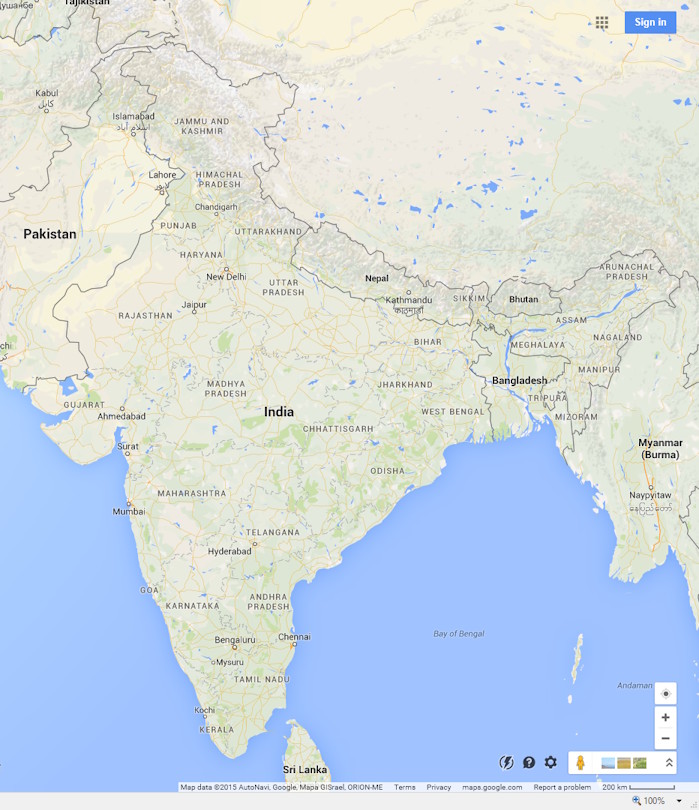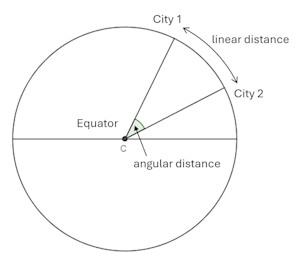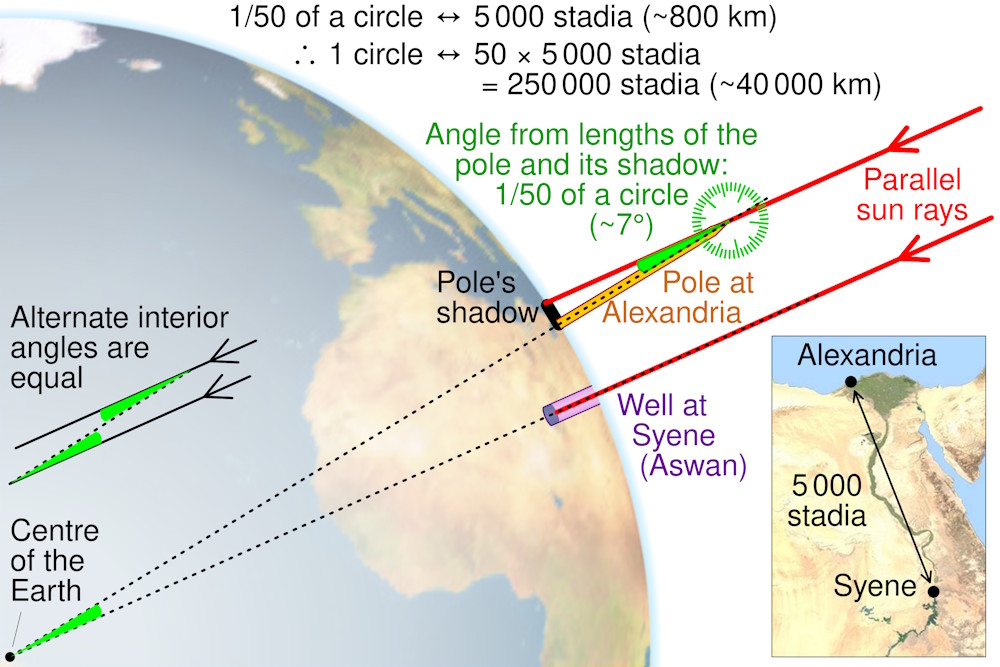Over 2,000 years ago, a Greek scholar named Eratosthenes became the first person in history to calculate the circumference of the Earth. He lived in Alexandria, Egypt, and knew that in the city of Syene (now Aswan), the Sun shone directly into deep wells at noon during the summer solstice. By comparing the angle of the Sun’s rays in Alexandria with those in Syene, and knowing the distance between the two cities, he was able to estimate the size of the Earth with remarkable accuracy.
In this activity, you will follow a similar approach using maps and coordinates of Indian cities. You’ll measure distances, calculate angles, and estimate the Earth’s circumference, just like Eratosthenes did centuries ago.
Activity
Requirements
Map of India with latitudes and longitudes of selected cities or access to Google Maps, calculator, ruler, pencil, paper.
 Image Credit: Google Maps.
Image Credit: Google Maps.
Cities and their coordinates
-
Mumbai: 19.0° N, 72.8° E
-
Delhi: 28.6° N, 77.3° E
-
Chennai: 13.0° N, 80.3° E
-
Bengaluru: 13.0° N, 77.6° E
-
Jaipur: 26.9° N, 75.8° E
-
Kochi: 10.0° N, 76.3° E
Procedure
-
Choose any two cities from the list provided.
-
Using the map, measure the linear distance between the two cities (in km). Record your measurement.
-
Note the latitude of each city and calculate the difference in latitude. This gives you the angular distance between the cities.
 Image Credit: Kindle Education.
Image Credit: Kindle Education. -
Use these values to calculate the circumference of the Earth and record your result.
-
Repeat the above steps for two other sets of cities.
-
Observe carefully and think about how the choice of cities affected your results.
Observations
| Sr. No. | Cities selected | Linear distance between the cities | Angular distance between the cities | Circumference of earth |
|---|---|---|---|---|
| 1. | ||||
| 2. | ||||
| 3. |
Reflect and Discuss
-
How close were your calculations to the actual circumference of the Earth (approximately 40,075 km)?
-
How can you determine the latitude of a place without looking it up in an atlas or map?
-
Why do different sets of cities give slightly different answers? Do certain pairs work better than others, why?
-
In this activity, we assumed that the Earth is round – a fact we often take for granted today. But how did people first conclude that the Earth is round? Can you think of observations or evidence that would help someone reach this conclusion?
References and Further Reading
- Asimov, Isaac. How We Came to Know the Earth Is Round, Walker & Co. 1972.

